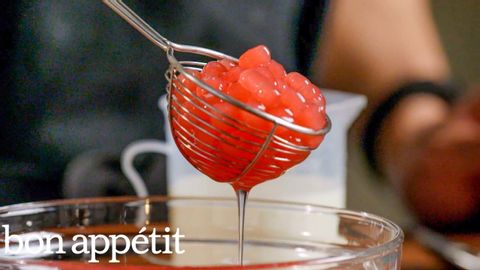紐約市標誌性的臺灣波霸 | 手工製作 | Bon Appétit (NYC's Iconic Taiwanese Boba | Handcrafted | Bon Appétit)
 沒有此條件下的單字
沒有此條件下的單字- v.t./i.棒;黏貼,張貼;堅持;伸出;忍受
- n. (c.)棍棒,棍枝,枝條
US /ˈprɑsˌɛs, ˈproˌsɛs/
・
UK /prə'ses/
- v.t.用電腦處理(資料);(依照規定程序)處理;處理;流程;加工;理解
- n. (c./u.)(規定的)程序;過程;進程;方法;法律程序;進程
US /ɪnˈɡridiənt/
・
UK /ɪnˈgri:diənt/
